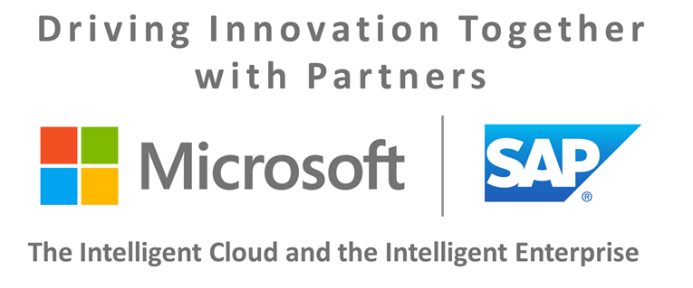The Times They Are A-Changin'
While the last blog post highlighted the Microsoft and SAP partnership from a historical perspective, this time, we dive deeper into the components of SAP Embrace.
 The center of the SAP Embrace universe is all about adding business value to the customer and supporting their journey to an innovative and intelligent enterprise. That statement is partially marketing. But it also indicates the commitment of Microsoft and SAP to respect the business needs of their customers. With this starting point, the program can be split into four main pillars.
The center of the SAP Embrace universe is all about adding business value to the customer and supporting their journey to an innovative and intelligent enterprise. That statement is partially marketing. But it also indicates the commitment of Microsoft and SAP to respect the business needs of their customers. With this starting point, the program can be split into four main pillars.
- An Optimized Platform that runs SAP solutions on Microsoft Azure as Infrastructure as a Service, integrates the different ecosystems and opens the options for extending solutions by bringing together the portfolios of SAP and Microsoft.
- SAP and Microsoft will deliver Reference Architectures that jointly define technical blueprints and highlights how different services can be combined in generic scenarios.
- Market Approved Journeys that deliver industry-specific best practices. This is not a one size fits all approach, and each customer needs to consider the architecture that will best fit within their industry domain.
- The joint Embrace Engagement of SAP, Microsoft, and partners to bring about the best results.
One might wonder, “Fine. But what’s so special about SAP and Microsoft? Isn’t it the same for SAP and other hyperscalers?” To answer the question, let’s look at what makes Microsoft special.
The Microsoft portfolio ranges from Azure to the Power Platform and Microsoft365, plus development tools like Visual Studio Code and GitHub. But that is only one side of the coin. Another is that SAP and Microsoft are customers of each other. So, SAP runs many of its systems on Microsoft Azure and uses Microsoft365. Microsoft is using SAP as the backbone for its business on Azure, which is highly integrated with Microsoft365.
Besides customer feedback, running their own IT systems is another great input for improvements, such as the continuous improvement in the operations area of Microsoft Azure when it comes to SAP workloads. This approach to SAP Embrace makes it clear why the collaboration is something special. Both companies are not just selling a solution; they are actual customers.
From a customer’s perspective, the pillars of SAP Embrace may not be so clear. So how can we make the story more real for customers? Let’s look at the story from a different angle, breaking it down into three topics that might be more meaningful.
Lift: Microsoft as a provider of Infrastructure as a service (IaaS) allows customers to “lift” their SAP systems to the cloud. Outsourcing this infrastructure load is cost-effective and allows for band-width flexibility to smooth out peak and off-peak computing needs. Beyond IaaS, there is more to consider, including new or enhanced options for system provisioning, availability, disaster recovery, and supporting operations teams with Azure-native tools that interact with SAP workloads.
Reshape: By bringing SAP and Microsoft together, new options emerge to reshape and improve your processes. From integrating SAP data into Excel, inputting data into SAP via a chatbot in teams, or blending Azure AI services into ABAP code. There is a lot to play with here, and it takes a general desire to do things differently and to create efficiencies to improve business processes.
Create: This is where the fun begins. By combining SAP and Microsoft, bypassing the former restrictions of purely ABAP-based extensions in the SAP core, and eliminating the downsides of systems upgrades, you have the freedom to create innovative solutions using tools that make sense.
Three things need to be mentioned explicitly as they often get asked:
- The sequence of Lift, Reshape, and Create is not fixed. One step is not a prerequisite for the others. Making your enterprise more intelligent is a journey to be undertaken in the most agile way possible.
- Although SAP’s intention is to push the adoption of SAP S/4HANA, it is not a prerequisite for any of the things mentioned above. You can start reshaping your business processes in your SAP Business Suite system.
- Your SAP system need not be transferred to the cloud. A hybrid approach is possible.
So, you may ask: Did the January 2021 partnership extension change anything? The short answer is NO. But three key points make the partnership all the better for customers.
First, Azure as an infrastructure as a service provider is the clear best practice choice and gains even more traction with the RISE with SAP announcement. Second, SAP is making it easier to incorporate Microsoft Teams into SAP products to improve collaboration at customer sites. And last but not least, simplified integration of SAP and Microsoft services to create innovative solutions that optimize and automate business processes
After this overview of SAP Embrace from the perspectives of history and content, in the next post, we’ll make things a bit more tangible and look at combinations of SAP and Microsoft365 that make your business life easier and can become a reality today.




